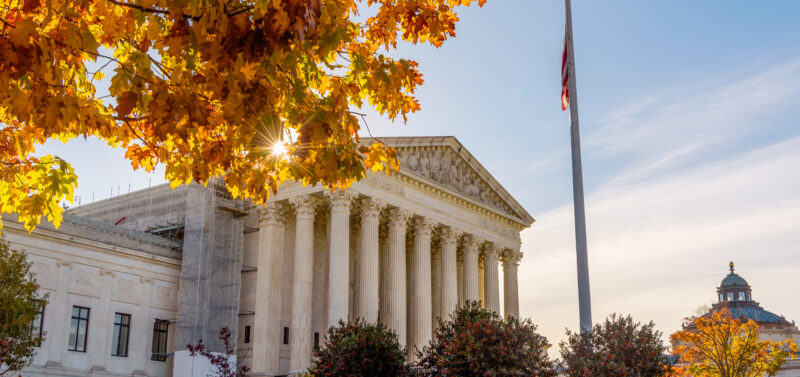On December 10, 2024, the U.S. Supreme Court heard oral arguments on Seven County Infrastructure...

Lagunitas Creek Floodplain and Riparian Enhancement
More than 11,000 cubic yards of historically placed fill was excavated to expand the riparian corridor with a new, well-connected floodplain and secondary channel complex that provides rearing habitat for endangered Central California Coast Coho Salmon.
Why does this project matter?
Lagunitas Creek provides critical habitat for endangered Coho Salmon and California Freshwater Shrimp, and threatened Steelhead Trout. In fact, Lagunitas Creek supports the largest and southern most spawning run of Coho Salmon in the Central California Coast Coho Salmon Evolutionary Significant Unit. As such, the California Department of Fish and Wildlife (CDFW) lists Lagunitas Creek as one of four high priority watersheds for restoration efforts aimed at improving habitat conditions for the recovery of the species.
What is ESA doing to help?
Several organizations collaborated to implement this important project located within the north district of Golden Gate National Recreation Area, including Salmon Protection and Watershed Network (SPAWN) at the lead, the National Park Service (NPS), and ESA’s technical design and restoration experts. The California Department of Fish and Wildlife (CDFW) Fisheries Restoration Grant Program (FRGP), California State Coastal Conservancy’s Proposition 1 Grant Program, and California State Water Board Clean Water Act Section 319(h) Grant Program, provided generous funding for this project to come to life.
To meet the project’s goals to improve water quality and increase rearing habitat for Central California Coast Coho Salmon and Steelhead Trout, ESA designed 1,300 feet of well-connected floodplain expansions, secondary channels, and transitional ecotone slopes, all enhanced with a variety of large wood and biotechnical habitat structures. Our design planning included performing a feasibility study, developing conceptual plans, conducting design analyses, and preparing construction documents. We also provided SPAWN support with permitting, environmental compliance, and landowner, community, stakeholder, and resource agency outreach.
Construction was completed in 2019. The team removed more than 11,000 cubic yards of fill from past developments to create a mosaic of floodplain habitat that will support the recovery of Central California Coast Coho Salmon and Steelhead Trout. Since construction, the project has experienced several large winter storms and continues to provide the intended design functions.
Connect with our team
Details
Client Salmon Protection and Watershed Network (SPAWN)
Location Tocaloma, CA
Market Natural Resource Management

News & Ideas
After the presidential election, our cultural resources experts are watching for significant adjustments to cultural...
ESA is pleased to sponsor, present, and attend this year’s National HCP Coalition 10th Annual...
On November 12, 2024, the D.C. Circuit Court of Appeals (DC Circuit) ruled on Marin...
ESA is pleased to announce exciting new additions to the Northwest region as we welcome...
On October 10, 2024, the California Fish and Game Commission accepted the petition to list...







